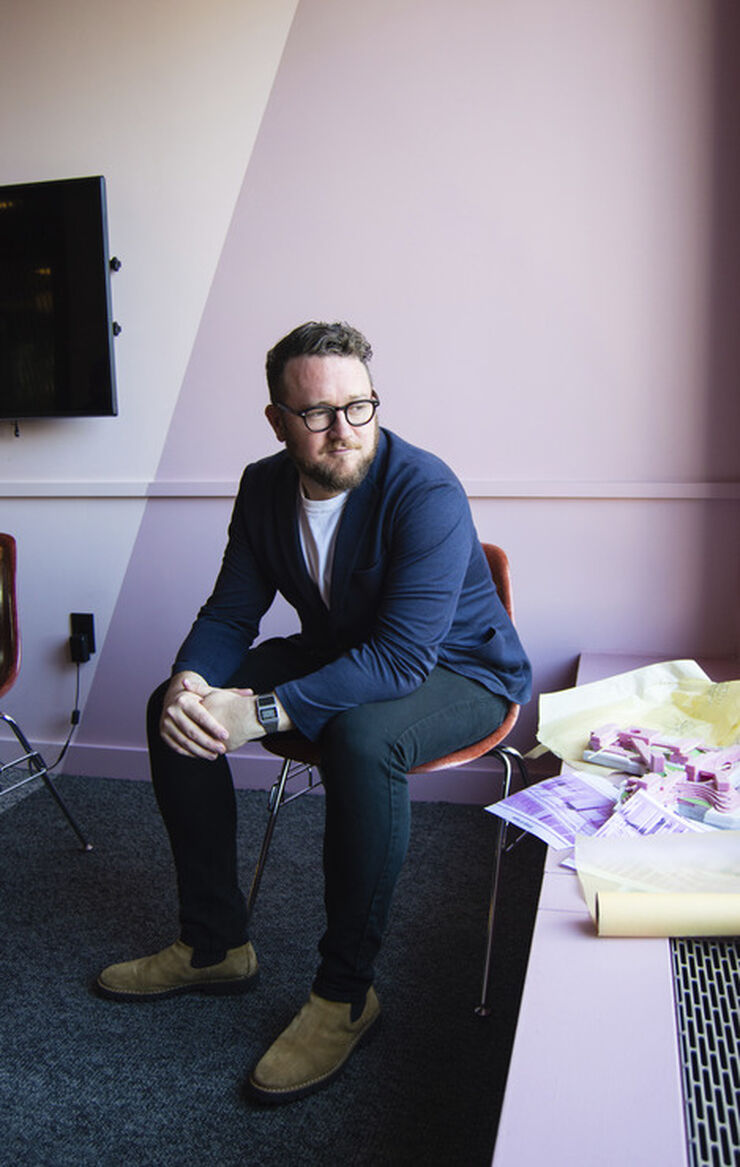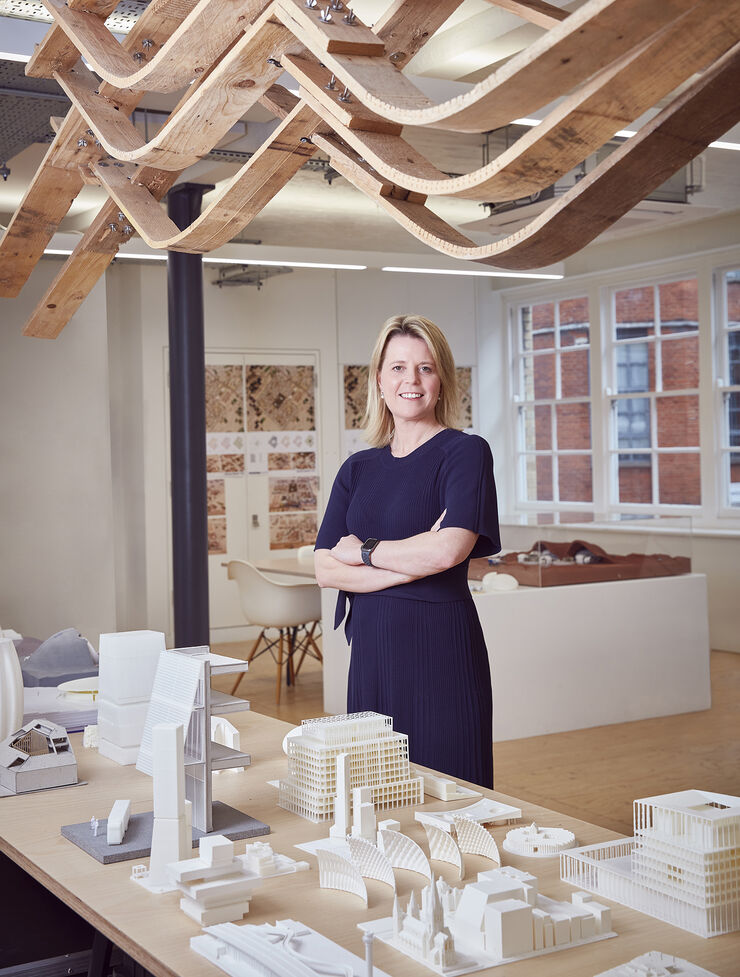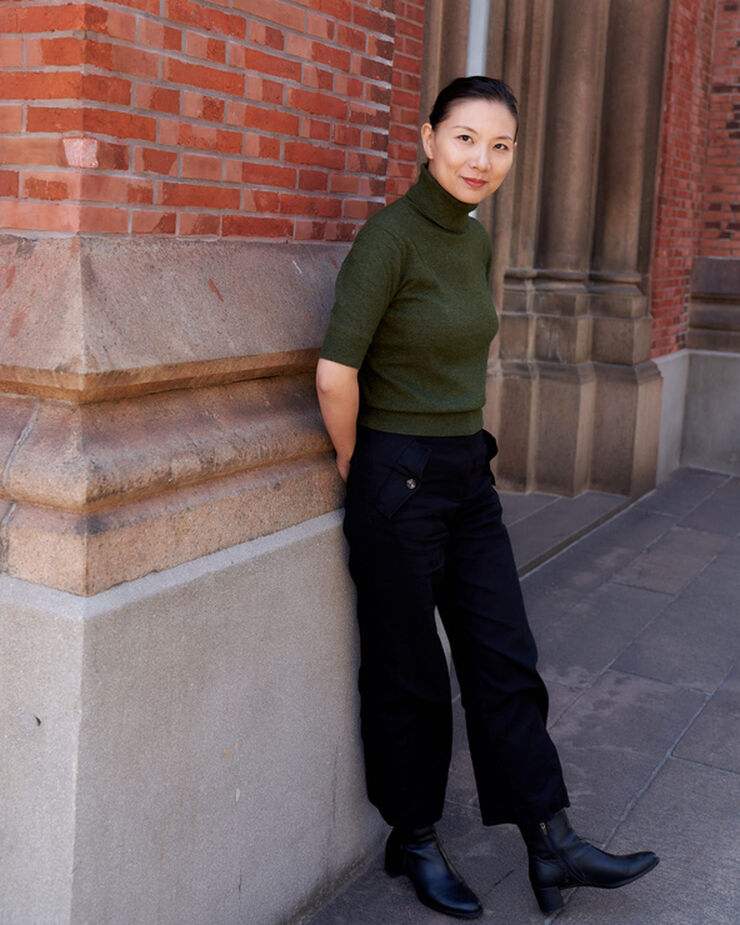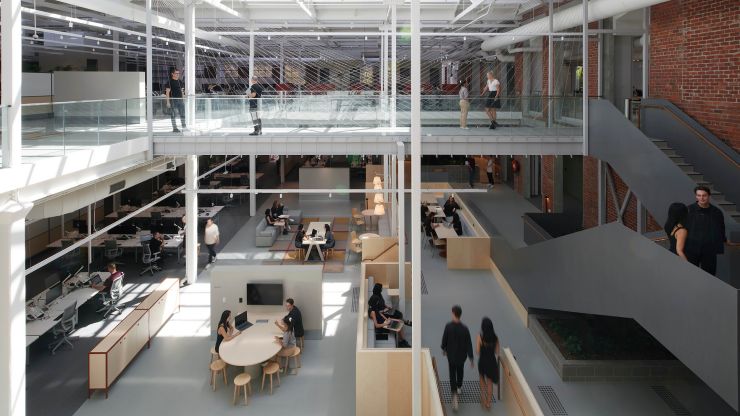Transcript
Liz Westgarth introduces the episode.
This is Hassell Talks, a podcast series exploring the rich mix of perspectives, collaboration, and creativity. We believe it’s so crucial to great design now and in the future. I’m Liz Westgarth, an architect based in Sydney. And like many of you listening, my colleagues here and in studios around the world are seeing some pretty significant changes happening around us. We don’t know exactly what life work in our communities will look like further down the track. But one thing we’re sure about is that some of the trends that we saw developing over the last few years have only accelerated since the global pandemic took hold.
These shifts all have implications for the way people are interacting with places, and that really presents an opportunity for designers. We’ve invited our good friend and collaborator David Grant of Brickfields Consulting and a few global team members from Hassell to talk about how these issues are playing out in cities, across the world. As consumer research experts, David and his team have been delving deeper into the trends to give our clients and designers extra insights into the people who use the places we create. We hope you enjoy the show.
David Grant starts talking.
So Brickfields Consulting was set up 10 years ago and we work with a range of property owners and operators to help them understand how they can attract customers to their various places. One of the areas of research that we look into quite closely and we have done so for about eight years is looking at trends forecasting within the built environment. The built environment and property as a sector needs to plan on really long horizons, and we’re building buildings for 30, 40, 50, maybe a hundred years or more. We understand that in that space of time, a lot can change. I mean, even in eight months, the world has been turned upside down. So we need to be more aware of the change that can take place in a period of time and therefore plan in a degree of flexibility and adaptability into whatever we’re designing, the places and spaces that we’re creating so that we can adjust to the changing needs of different audiences.
And this special report is called Reawakened Spaces, which essentially looks at how COVID-19 has impacted on the built environment and our usage of it. But importantly, it looks at the positives of reawakening and reopening. What are the opportunities? How has the expectations of the market changed? And what will that look like in the future? Each city is unique, each place is unique within that city, but also then you overlay the element of COVID-19 and you understand that everyone’s loss that they’re dealing with is quite distinctive, it’s unique as well and therefore the response is going to be unique. So we want to speak to four different designers in different locations to understand what was being done in each of those cities in response to these types of trends, to the opportunities that are arising as a result of COVID-19.
So from Shanghai, we’re going to be joined by urban designer, Chong Wang. From London, we’ve got landscape architect, Angus Bruce. From San Francisco, we’ve got urban designer, Richard Mullane. And from Sydney, Liz Westgarth. Thank you all for coming together for this chat today. I’m going to start with something positive because we’ve heard so much about the negatives associated with COVID-19. And I wanted to ask you what you think is going to be the most positive thing that will arise from COVID-19. And Richard, I’m going to ask that question of you first. In San Francisco, surely there’s been some positives that have come out of that situation, the difficult situation that you find yourself in.
Richard Mullane speaks
I think there’s been a shift in what people think is possible, and I think it’s really about resilience. I mean, a lot of the conversations that I have in the work you do here is around sea level rise, climate change. It’s often a difficult thing to talk to people about because they don’t think it’s possible for us to adapt our way of life, and that’s been proven to not be the case. So I think that there’s huge potential for people to think about all the scale of change in the city, and there’s projects being thought about and transformation being thought about that just wouldn’t have been on the table six months ago.
David Grant asks:
And, Angus, what’s the most positive thing that will arise from COVID-19 for you?
Angus Bruce responds:
So as a landscape architect, I see the value of the public space being exponentially increased in importance. It’s not just simply the leftover or the in between of some other form or other function that it’s actually got a significant financial, and importantly, social value. So I’m seeing this shift as a blend with both climate impact and COVID is changing the perspective of government, of clients, and of communities around the value of public space.
David Grant asks Angus:
Within the research, what we’re seeing is an emerging trend globally for people to be more socially connected within their residential communities. And it’s understandable considering that this is such a global challenge in terms of, how do we support each person when we need to remain separate? So if you think about that idea of staying apart together, that’s very much in line with supportive systems and this trend that we’re seeing emerge. Now, Angus, you’re in London. What sorts of examples of supportive networks can you see? And how do you think that that’s going to change London in the future?
Angus responds
We tend to have cities with big green spaces, and the small intimate moments spaces, a park bench that isn’t necessarily attached to a bus stop or on a major road, that you can actually have nooks and crannies in the city that are not issues of risk and safety of an evening or whatever else, but there are moments that are planned and intentional. They’re not leftover because the building footprint couldn’t take it over or whatever and they’re accidental as a negative result of the architecture or the built form, that they’re actually intentional quality public spaces, but they’re small and they’re intimate. And they allow for three people to sit together and have a chat. Not on the one bench. They could actually be facing each other.
David now introduces Chong:
Now we’re going to go back to Shanghai, and I wanted to ask Chong, how do you think that supportive systems will play into or influence how you design spaces in the future?
Chong answers:
It’s going to be a finer grain, if you like. So we want to have all the functions within say a kilometre, people can actually walk within 10 to 15 minutes, because the bigger the scale is, and then it actually brings different energy and different concentration on centrality around them. Whereas if you break it down into a neighbourhood, and it just means that everything is more walkable and more accessible and more a neighbourhood focused.
David comments:
And certainly that’s what we found in the report, that a lot of those old-fashioned values are actually resurfacing. I think now we have the opportunity to requestion how we want to live our lives and find value in places that we didn’t previously such as those sorts of social networks and the resilience of those networks. So the second theme is around this idea of recalibrated spaces, which is really interesting because it’s been emerging for a number of years. We’ve seen it start in the retail sector with the advent of online retail changing how larger spaces, anchored spaces within malls work and how they’re repurposed. And we’ve seen now with COVID-19 that these recalibrated spaces trend has become really widespread, particularly with large scale infrastructure like stadiums and airports and so on. The classic example is a stadium being repurposed as a hospital, or an event hall and conference centre being repurposed for health or medical needs.
But there’s also examples of much smaller scale repurposing going on in more organic ways. So we might have local authorities and councils working to repurpose outdoor spaces and pocket parks to provide that local amenity that hasn’t been required in the past. But because we’re living and working so close to home, those sorts of things now have value. And it’s quite interesting because anyone can get involved in this trend. It doesn’t require you to own or operate a physical space. You can just be an engaged citizen and repurpose spaces. So that idea of tactical urbanism certainly relates back to this trend.
Richard, you have a particular interest in designing for resilience, and I think that repurposing spaces is all about resilience, being able to explore new opportunities. So can you give us some examples of what’s happening in San Francisco related to this trend?
Richard Mullane answers:
The biggest one is the use of streets, and I think it’s a really positive trend. It’s like businesses taking over space within the sidewalk or within the parking lane, but also just the slow streets movement, which has really taken over in many cities here. I think Oakland was a leader in that, but San Francisco has also converted a number of streets to be neighbourhood streets and have stopped cars going down those streets. They’re essentially reserved for bikes and for exercise and people jogging.
David now asks Liz:
And what about you in Sydney, Liz? What’s happening around recalibrated spaces for you?
Liz Westgarth:
I agree with what Richard’s saying. We’ve seen that here locally in Sydney, that people are overtaking the streets. I live in a cul-de-sac and the kids are all out in the street drawing on the road, playing cricket in the cul-de-sac. It’s become the new playground. And particularly, it was so important for them to get outdoors and get some exercise when playgrounds were shutdown. The other interesting thing about recalibrated spaces I think is seeing how parking lots or parking areas in particular have been used as pop-up testing facilities, which we’re seeing in Sydney as well.
Angus Bruce speaks:
Or also saying a range of dormant land which might’ve been hoarded off, it’s owned by the council or the [inaudible 00:10:34] or the county where the hoarding removed and communities are allowed to take claim on them. So if they don’t have a local playground, they’re setting up their own local play and veggie patch. There’s a little bit community, a little bit homegrown produce, a little bit kids’ recreation in what would have otherwise just been a disuse car spot on the corner or so forth.
David Grant comments:
Mobility is obviously something that cities have been facing for quite some time in terms of, what does mobility look like in the 21st century? What we’re seeing as a result of COVID-19 is that obviously people need to remain separated from others, so it’s challenging that idea of close confines mass public transport, and it’s really hastening the trend around individual automated transport, which we’re seeing obviously emerge slowly, but it’s basically bringing that trend to the formal quickly.
So in terms of mobility, it’s probably one of the trends that really varies in terms of its application across different cities. So in Shanghai city of 20 plus million people, large numbers of people need to move in and around the city. There’s an undeniable requirement that they can’t just ditch public transport, mass public transport in the way in which other cities possibly can. So for them, the challenge is around how you move those numbers but with a different decentralised network. How do you see mobility changing how you’re living in the city, Chong?
Chong Wang comments:
Unfortunately, Shanghai doesn’t have yet the infrastructure for people to change the transport mode. I mean, in general, in our work and in how we talk to the government in new city planning or city renew projects, we do really wanting to promote more of those walkable, cyclable streets and infrastructure.
David Grant asks:
Whereas for smaller cities where you don’t have that intense requirement, you can pick up the slack with individual private transportation. So we’re seeing higher rates of cycling, walking, keeping things local, as well as the idea of exploring autonomous vehicles, which obviously gets around the COVID safe requirements. So cities like San Francisco that are world known for their technology uptake, cities where we might see that sort of trend emerge first.
Liz Westgarth answers:
Yeah, I think we’re all much more conscious that we want to be in a walkable or a cyclable city. I pretty much stick to a 5K radius. I rarely use the car, haven’t got on public transport for a long time actually. The New South Wales government has announced new popup cycle ways to really encourage that mode of transport to work. And they’ve also started to pilot low speed zones as well, really around putting people first.
David Grant introduces the next trend:
So the fourth trend that we’re going to talk about today is around the idea of slowed down culture. So again, this is something that’s been emerging for a while, but people are really seeking out these sorts of experiences of a slowed down lifestyle. Originally we saw it emerge around travel and food, and now we’re seeing it emerge around how people live their lives in physical spaces. So what we spend our time doing, the idea of going for long, slow walks within our neighbourhood for instance is a really simple example of this sort of thing from a behavioural point of view.
So something that works counter to this is the idea of having limited bookings within a restaurant in terms of time. Having to rush out of a place certainly isn’t very COVID-19 friendly. So what we might see in the future is some examples of places where we have the opportunity to linger and to dwell more, that extra stimulation is taken out of places and spaces, that we limit the numbers of people for pure enjoyment. And we’re seeing examples of this sort of thing already happening as result of maintaining COVID safe practises. So, zoos and other theme parks and recreational facilities are limiting the number of people, and people are suddenly experiencing the fact that these places can be more pleasurable without the hustle and bustle. Richard, from your home in San Francisco, how are you seeing slow culture manifest itself on the street?
Richard Mullane says:
We’re talking about bikes, even to get a bike on Amazon now which delivers within two hours, that’s stopped because of demand and now it’s a three-week wait because of just how popular they have been. So I think people would just come to terms with that, which I think is a great thing. And it’s shifted priorities a little bit, even in San Francisco to not be such a here now type of culture.
David asks Chong:
Chong, Shanghai is such a busy city all of the time. I can’t imagine it slowing down. Is this trend showing itself there at all?
Chong answers:
I love to say we feel there’s a lot of slow down. I guess it probably presents itself in a different way. It’s like there’s one hand, there’s still high efficiency in terms of economic activities and expectation from how generally things are going. But then there’s also an awareness of this health and social and also with more around this sort of leisure and needs. So that in a way that people are still working really hard and I guess are still running very fast in this city. Shanghai is still quite a busy city, but at the same time, I think people are just more aware of spending time with their family, because you have to, because for example, schools were closed for a period. Generally, people, they’re finding that balance between the very fast moving with them and then look after the basic needs.
David Grant wraps up.
This particular period of time has forced us to rethink everything that we believe previously. I’m hopeful that it’s going to be a really exciting renaissance period where we’re able to question what we’re doing, where we’re able to redefine what physical spaces and places need to provide people with, that were more open-minded around the experiences that are provided in certain places and we’re less fixated on the use of a particular building or space. That we look at it as being something that needs to be blended in its use and what it’s doing for its local community. I wanted to thank the four participants today, Chong in Shanghai, Angus, who is in London, as well as Richard in San Francisco and Liz in Sydney. I wanted to thank you all for your time and your insight today.
Liz concludes the episode.
The Brickfields report, Reawakened Spaces, examines the innovations coming out of COVID-19 and the implications for property owners and operators of public space. It is available on the Brickfields website at brickfields.com. I’m Liz Westgarth and you’ve been listening to an episode or Hassell Talks. If you’ve enjoyed this conversation and would like to hear more, please subscribe and check out other episodes. Thanks for listening.



